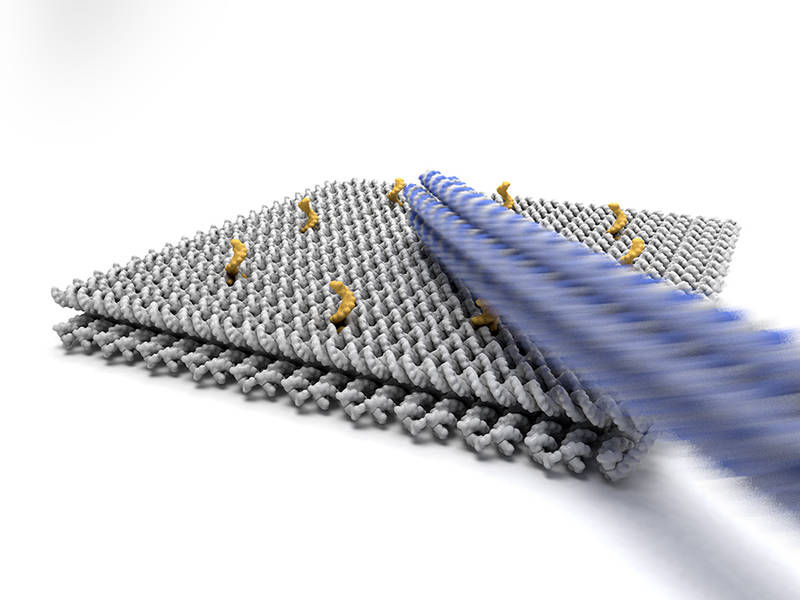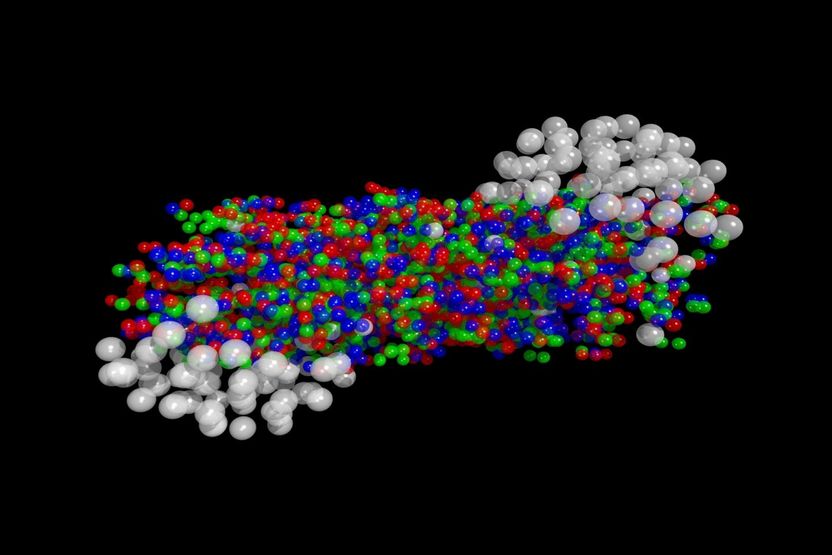Artificial Cells
Porous molybdenum oxide capsules serve as models for biological ion-transport processes
Do cells always have to be developed from organic carbon-containing compounds? When resourceful scientists stretch their imaginations, they quickly find an answer to this question. This is demonstrated by the work of Achim Müller of Bielefeld, Germany, and his co-workers, who have constructed an "artificial cell" from an inorganic macromolecule: a spherical polyoxymolybdate cluster. Twenty round openings, each surrounded by an alternating series of nine molybdenum and nine oxygen atoms, form pores in the artificial cell membrane. Covalently bound in the interior are twofold negatively charged sulfate groups, which provide for a significant negative charge on the surface of the capsules. water molecules are also found inside the sphere. Each pore is closed off by a "stopper" consisting of a urea molecule bound to the Mo9O9 ring by noncovalent interactions.
A typical example of biological signaling processes in living cells is a controlled ion flow through special channel proteins in the cell membrane. This can be controlled through the binding of a suitable ligand or by the electrochemical potential across the cell membrane, so ultimately by the difference in concentration of ions inside and outside the cell. Calcium ions (Ca2+) play an important role in many biological functions. For this reason, Müller et al. chose to use Ca2+ for their further experiments. They added Ca2+ ions to an aqueous solution of the molybdate capsules and examined the resulting crystals by X-ray crystal structure analysis, which revealed that not only did the calcium ions wander into capsules but that the urea stoppers were also back in place inside the Mo 9O9 pores.
This behavior of the artificial cell mirrors events that unfold in a voltage-gated ion channel in a living cell. Initially, the pores are closed. When an excess of Ca2+ ions is added, their positive charges cancel out the negative charges on the surface of the sphere which changes the electrochemical gradient across the artificial cell membrane. The lids on the pores open, allowing Ca2+ ions to flow into the capsule. This possibly changes the charge distribution across the artificial cell membrane again such that the pores close up.
Original publication: A. Müller; "Porous Capsules Allow Pore Opening and Closing That Results in Cation Uptake"; Angewandte Chemie International Edition 2005.
Other news from the department science

Get the chemical industry in your inbox
By submitting this form you agree that LUMITOS AG will send you the newsletter(s) selected above by email. Your data will not be passed on to third parties. Your data will be stored and processed in accordance with our data protection regulations. LUMITOS may contact you by email for the purpose of advertising or market and opinion surveys. You can revoke your consent at any time without giving reasons to LUMITOS AG, Ernst-Augustin-Str. 2, 12489 Berlin, Germany or by e-mail at revoke@lumitos.com with effect for the future. In addition, each email contains a link to unsubscribe from the corresponding newsletter.
Most read news
More news from our other portals
Last viewed contents

Piecework at the nano assembly line - Fast computer control for molecular machines
I._M._Dharmadasa

Soluble Elements from a New Corner of the Periodic Table
Table_of_nuclides,_25-48
Steam_drum
Møller-Plesset_perturbation_theory
Twisting graphene into spirals - Researchers synthesize helical nanographene

The most exotic fluid has an unexpectedly low viscosity
Gramicidin




























































